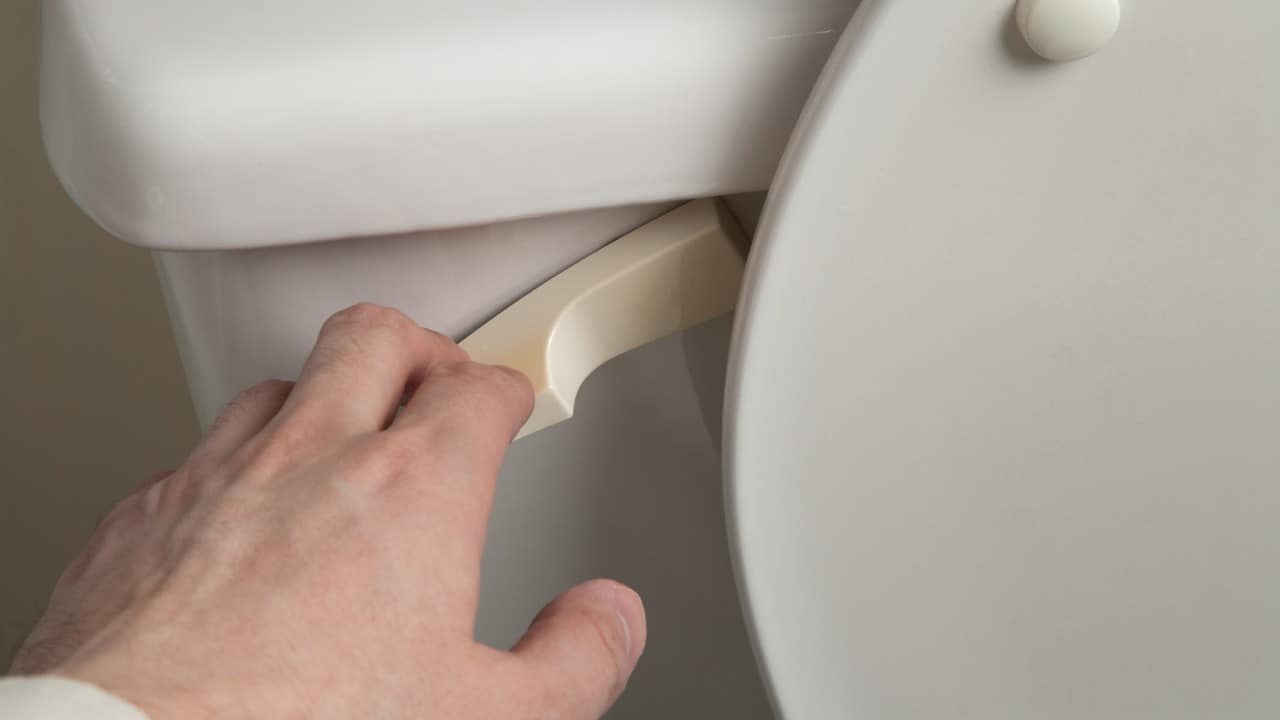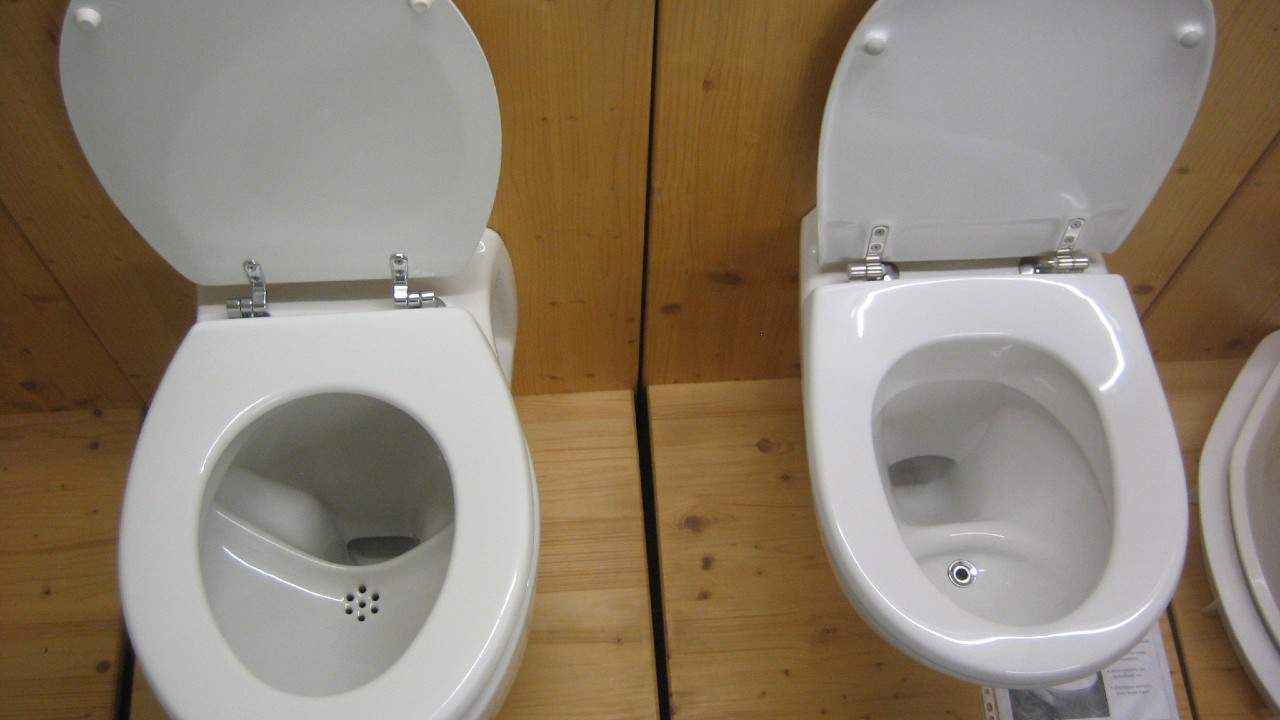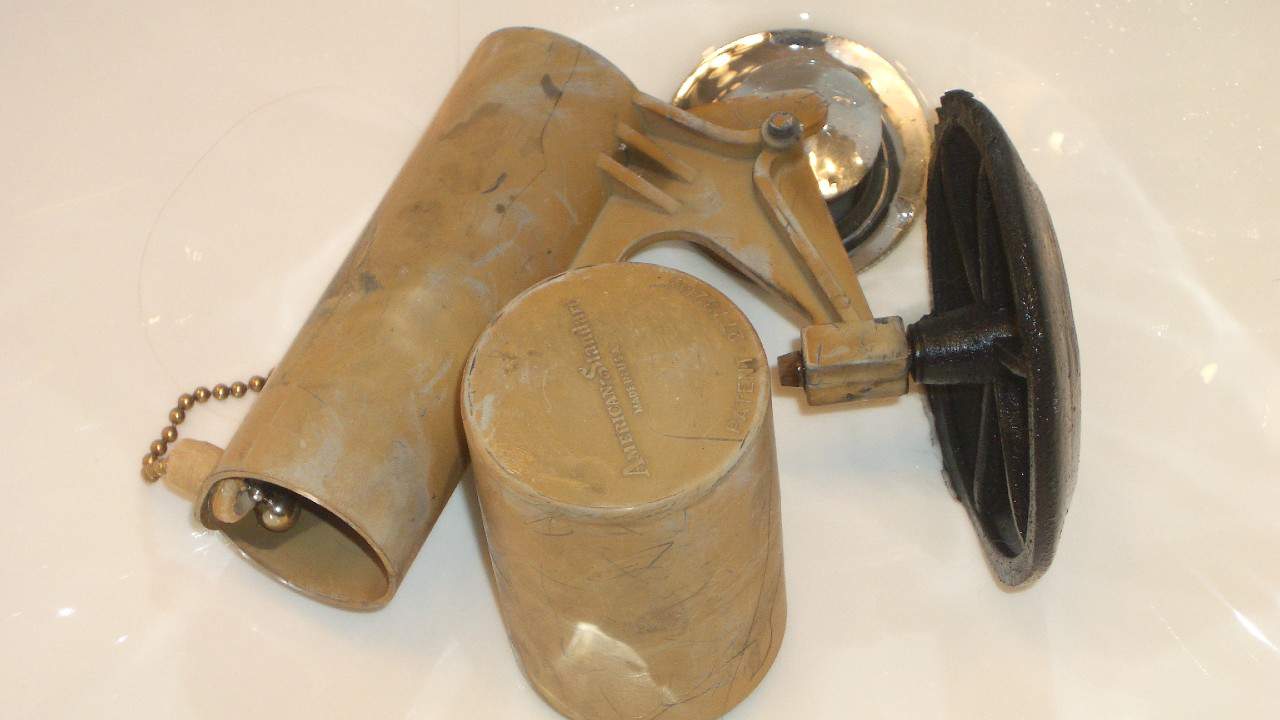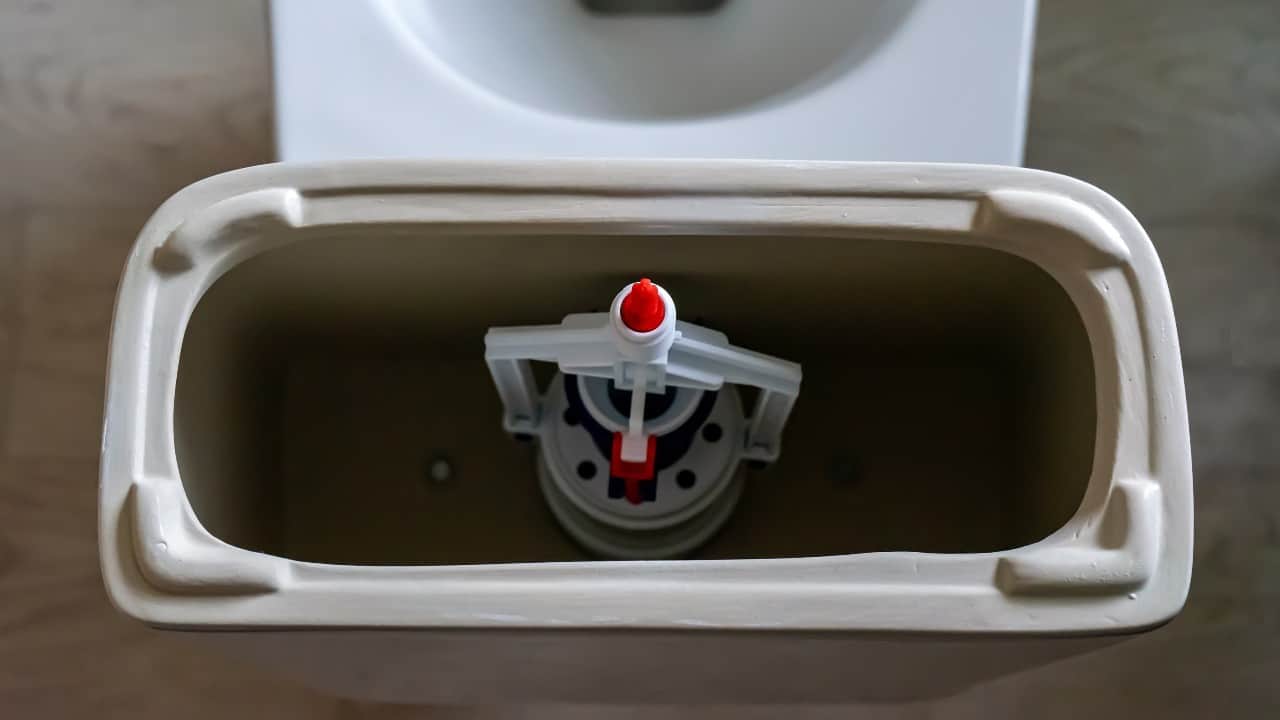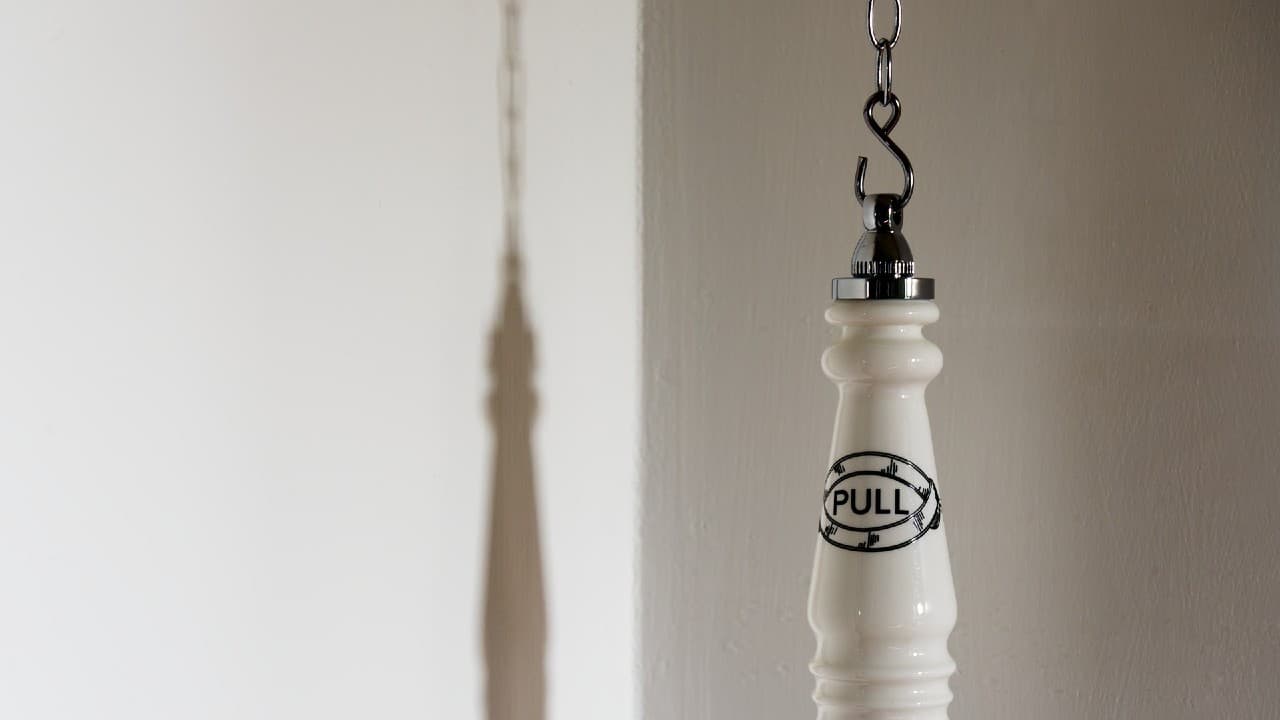It is still possible to flush a toilet when the handle is broken. All that you have to do is to open your toilet’s tank, find the part called “the flapper”, and then lift it up. Doing this will result in an immediate release of water into the toilet bowl which will then flush down its contents.
In most cases, lifting the flapper is as simple as opening the toilet tank and tugging on the chain that connects the flapper with the handle lever. If this chain is disconnected or broken, one can simply reach down and pull the flapper by hand.
In this guide on how to flush a toilet without the handle, I’ll be taking a quick look at three simple and completely foolproof methods of flushing a toilet manually. I’ll also try to provide answers to some of the most common questions related to this topic.
Contents
Can You Flush a Toilet Manually?
Yes, you can. This sanitary fixture is a simple yet very effective device. Once a large amount of water is transferred from the tank to the bowl, the toilet flushes and thus eliminates human waste and toilet paper in a quick and efficient manner.
In other words, the homeowner only has to press down on the handle and the combo of gravity and the weight of the water will do the rest. However, as stated above, these fixtures are simple, gravity-fed appliances, and can be flushed even when their handles are broken.
How Does a Toilet Handle Work?
Before we take a quick look at a few simple methods of flushing a toilet with a broken handle, let’s see how this component functions in the first place. Knowing its role should help you successfully replicate its mechanism in use.
The flushing mechanism inside most toilets works by operating several levers inside the tank. The entire process starts when the user moves the toilet handle in the right position. When the toilet tank is full and the user pushes the handle, the aforementioned component called the flapper goes up and, in that way, uncovers the outlet that’s right below it. This allows water to flow from the tank to the bowl.
Once the user lets go of the handle, the tilt lever will open up a component called a ball valve. This will allow new water to enter the toilet tank under big pressure and refill it completely. The float stops the water supply once the water reaches the desired level. After that, the user can flush the toilet once again.
With these simple facts in mind, operating the toilet’s flushing mechanism without the handle is not difficult – now you know how everything works. Now, let’s check out three simple ways in which you can approach this issue:
Three Methods of Flushing a Toilet With a Broken Handle
Photo by SuSanA Secretariat via Flickr (CC BY 2.0).
While it’s undoubtedly an inconvenience, a broken handle can’t really stop you from flushing your toilet. You’ll still be able to do so until the plumber comes to your home to replace it or repair it. In the meantime, give the following three methods a try:
Method #1 – Lifting the Flapper
Photo by Jon via Flickr (CC BY-SA 2.0).
Obviously, the first step in flushing the toilet in this way would be to remove your toilet tank’s lid. If you don’t know what a toilet tank is, it’s the square-ish cistern right above the bowl and the component on which the handle is typically situated.
And once you open this water reservoir, you will have to locate the flapper inside of it. This component is a red-colored rubberized stopper that’s typically situated at the bottom of the tank. The flapper hinges open in order to let the water get inside the bowl and flush away its contents.
Check out this post on parts of the toilet tank for more help.
In most toilet tanks, the handle lever and the flapper are connected by a chain. By pulling this chain upward, you can lift the flapper and, in that way, flush a toilet that cannot be flushed regularly due to a broken handle.
- Remove the lid from the toilet tank.
- Take a look at the bottom of the tank and find the flapper.
- Is there a chain running from the handle lever to the flapper? If yes, gently pull it upwards and you’ll flush your toilet.
- Is the aforementioned chain disconnected from the flapper? If so, you will have to reach down into the tank and lift the flapper manually.
- The water level inside your toilet tank should be at least one inch below the tank’s top. If it’s not, flush the toilet by using one of the methods described below.
As I already said, in the case of a chain not being connected to the flapper, one has to lift the flapper manually, which requires reaching down into the toilet tank. Yes, this means that you’ll have to get your arm wet, but that’s not something to worry about.
That’s because the water inside the tank isn’t in any way different from the water coming out of your home’s faucets. If the water level inside the tank is low or if it contains no water at all, refer to one of the methods described below.
Method #2 – Pouring Water Into the Bowl
As stated above, toilets are operated by gravity. When used, all that the toilet handle does is pull on the aforementioned chain which, in turn, lifts the flapper.
The consequence of this action is a release of water from the tank into the bowl, which then results in a siphoning action that takes away the waste. From there, gravity simply pulls the bowl’s contents all the way down into the waste pipes.
You can skip to this last part by simply pouring some water into the toilet bowl. The only catch is that you’ll need a large amount of water in order to trigger the necessary siphoning action.
- Take a large, 5-gallon bucket and fill it with water.
- Quickly pour all of the water from the bucket into the toilet bowl. Make sure not to overfill the bowl or cause splashing.
There is a time window of about 5-10 seconds during which you have to pour a sufficient amount of water into the bowl to create enough pressure to trigger the siphoning action. A few gallons of water should be more than enough for this. Don’t forget that you can flush your toilet in this way in case there’s no running water in your household.
Method #3 – Pouring Water Into the Toilet Tank
Just like you can pour a bucket of water into your toilet’s bowl, as described in the second method, you can also do the same thing with your toilet’s tank. And once you’ve filled the tank with water, you just need to follow the steps described in the first method, i.e. pull the chain in order to lift the flapper and, in that way, flush the toilet.
A lot of homeowners prefer this method for a couple of good reasons. It offers more control as it allows you to pour the exact amount of water your toilet needs for a successful flush. Plus, it’s far less messy.
- Remove the toilet tank lid and place it somewhere safe.
- In case there’s no water in the tank, or if there’s not enough of it, fill a bucket with water and pour it into the tank. Make sure that the water level stays one inch below the tank’s top.
- Pull the chain (or lift the flapper manually, if needed) and you’ll successfully flush your toilet without touching the broken handle.
Again, you can resort to this method if you ever find yourself in a situation where there is no running water in your household. You can also use it if you determine that, during normal operation, the flapper doesn’t form a tight seal. A nonfunctional toilet can be easily flushed in this way until you get a chance to repair it.
I’ve also written a post for those asking, Can you flush the toilet when the power is out?
What if My Toilet Tank Chain is Broken?
A detached or broken toilet tank chain is a very common issue. As you can already guess, a problem of this type makes the toilet handle completely useless.
Fortunately, however, it is still possible to flush a toilet whose chain is broken. Once you’ve opened the tank, all that you need to do is to find the flapper in it and pull it up.
- Take down the toilet tank lid.
- Roll up the sleeve and reach down into the tank. Find the flapper and pull it up in order to flush the toilet.
- If possible, try repairing or re-attaching the chain.
The chains that are situated inside toilet tanks can easily tear free from the flapper, slip off their levers, and even break sometimes. If anything like this happens, the chain will need to be re-attached or replaced completely.
Once you’ve put the chain back into its place, i.e. used it to connect the flapper’s top part with the interior lever, your toilet handle should work properly again. Before you make any repairs, however, make sure to flush the toilet first and turn off the water supply. It’s much easier (and safer) to work in a tank that is completely empty and dry.
Check out this post on how to flush a toilet without water as well. And if you would like to avoid these problems altogether in the future, consider getting an incinerator toilet.
The Conclusion
As you can see from above, flushing a toilet whose handle is broken can be done and it’s actually quite simple.
While pouring a bucket of water into the toilet bowl may seem like the quickest and easiest solution, I’d recommend pouring water into the toilet tank instead. This method is not as messy and it will also allow you to check whether the chain inside the tank is unhooked or broken.
Also, don’t forget that you can also use methods #2 and #3 whenever you’re having trouble with running water in your household.
